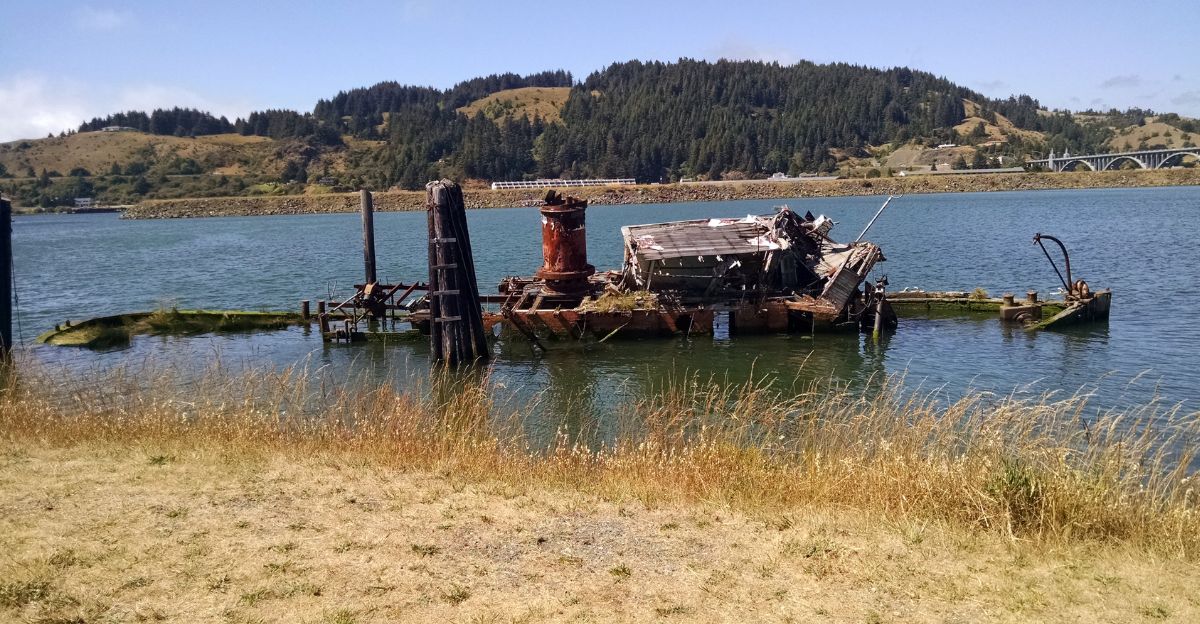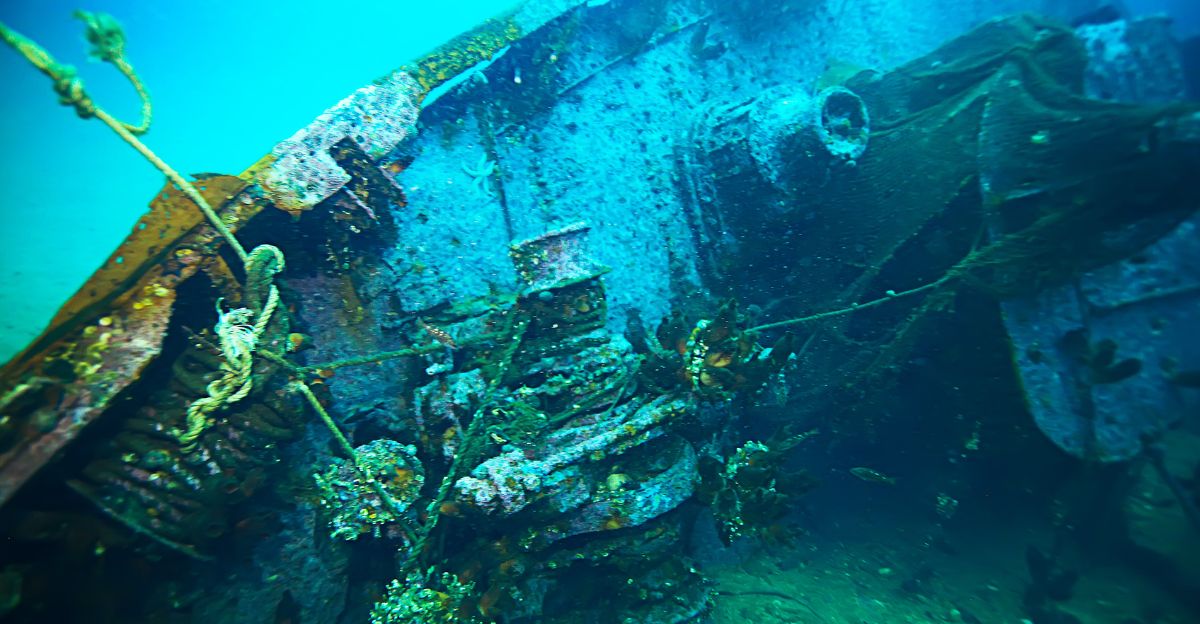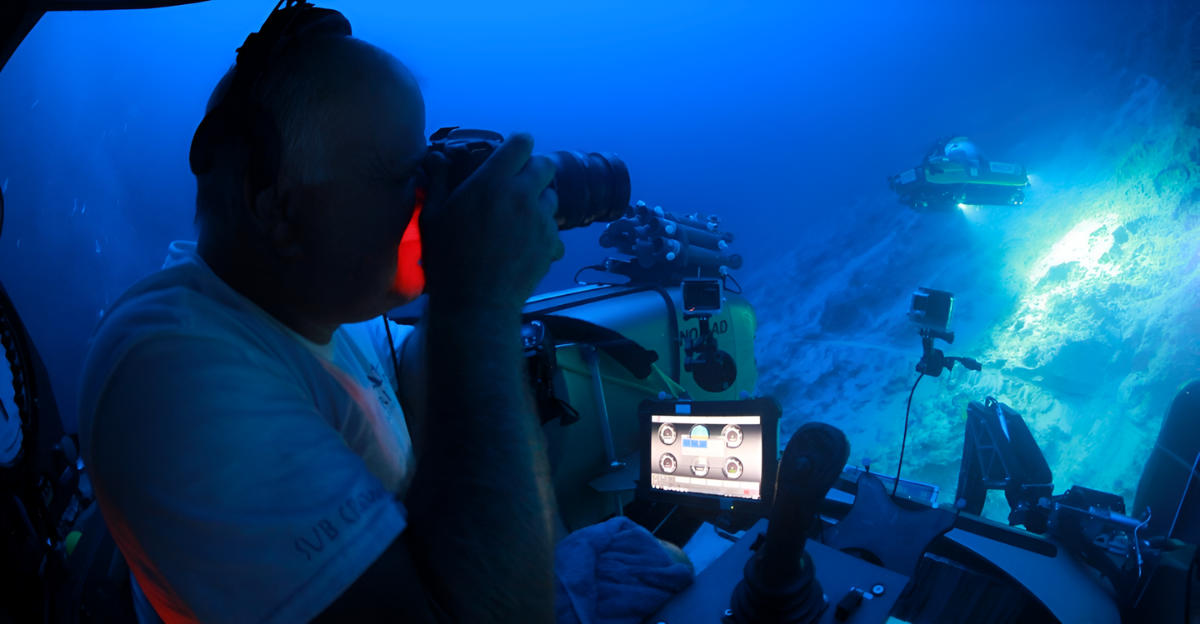
One foggy evening, off the coast of Manitowoc, Wisconsin, Christopher Thuss dropped a line into Lake Michigan and reeled in more than just fish. His sonar flickered with an unusual shape, revealing a shadow lurking just nine feet below the surface.
What began as an ordinary fishing excursion would soon become a historic moment. “I didn’t know what exactly what I was looking at at first,” Thuss later recalled.
Closer and closer he went, until a silhouette of a massive, forgotten vessel emerged, and the ghost of a story buried for a century resurfaced. This was no ordinary catch – it was a shipwreck that was waiting to be rediscovered.
The Ghost of the J.C. Ames

The wreck Thuss uncovered was the J.C. Ames, a 160-foot wooden tugboat intentionally sunk in 1923. Nui;t in 1881 to the lumber trade, the vessel was a titan of its era, boating a 670-horsepower engine and the capacity to haul multiple barges.
Its journey spanned decades and industries, from lumber to rail transport, before finally succumbing to despair. The tug’s final voyage ended with a fiery spectacle as it was burned and abandoned outside Manitowoc’s harbor, a practice that once entertained lakeside communities. For a century, the J.C. Ames lasy hidden, until Thuss’s fateful cast.
A Family Legacy of Discovery

What Christopher Thuss found is more than a stroke a luck — it’s part of a family legacy. His step-grandmother, “Shipwreck Suzze” Johnson, was renowned for aerial hunts, spotting wrecks from light aircraft and powered parachutes.
In 2015 alone, she found three shipwrecks in three days. Thuss’s discovery carries on that tradition, blending personal history with maritime archaeology.
“It’s pretty unique that I am the first person to lay eyes on this boat since it was last seen,” he said. The discovery also transcends generations and rekindles a love for uncovering lost stories beneath the waves.
Why This Shipwreck Is Special

The J.C. Ames is notable not only for its size but also for its outstandingly preserved state. Unlike most wrecks, it is nearly free of invasive quagga mussels, suggesting it was buried beneath the sand until recent storms exposed it.
This rare condition is now giving archaeologists an unfiltered glimpse into the past. The tug’s massive propeller — 10.5 feet in diameter — remains at the site, asilnet monument to its industrial strength.
It’s shallow depth and accessibility, make it an ideal location for kayakers and snorkelers, marging history with recreartion in an unexpected way.
The Science Behind the Find

Archaeologists like Tamara Thomsen are racing against time as quagga mussels threaten to destroy Great Lakes shipwrecks. The mussels’ presence can crush wooden wrecks under their weight, but the J.C. Ames’s recent exposure has provided a rare window for study.
“We only find them when they are exposed by a storms and someone sees them before they are covered again—it needs to be perfect timing,” Thomsen says.
The find enables experts to examine construction techniques and understand why this tug built so large, prociding insights into 19th-century maritime engineering and trade.
A Tugboat’s Journey Through Time

The J.C. Ames was not an ordinary vessel. Originally named the J.C. Perrett, it was built for $50,000 — more than $1 million in today’s money. Damaged in a collision in 1889, it was repaired, renamed and repurposed for railway use.
Durable and versatile, it became a workhorse of the Great Lakes, hauling everything from lumber to railroad cars. Over the years it passed through several hands, and each owner leaving their mark on its story.
The tug’s resilience and adaptability reflect the changing fates of the area, embodying the spirit of industrial progress and reinvention.
A Forgotten Community Tradition

While the J.C. Ames is notable for its size and presevation, its final moments reveal a unique chapter in local history. In the early 20th century,burning and scuttling old ships like the J.C. Ames was not only a practical way of disposing of worn-out ships, it became a form of entertainment for lakeside communities.
The locals flocked to the shore to watch as the once powerful tugs were set abalze and then slowly sank to the bottom of the lake one by one, marking the end of an era and the start of a new chapter for the Great Lakes.
Historians believe that more than a dozen met with this fate off Manitowoc’s coast, with only a few of the shipwrecks having ever been discovered.
The Human Side of Maritime History

The discovery was deeply personal for Thuss. The first person he called after spotting the wreck, was his father, who passed on the news to “Shipwreck Suzze” herself. This connection underscores how maritime history is woven into the lives of those who live near the lakes.
The J.C. Ames’s story is not just about a boat, it’s about the people who built, sailed and remembered it. The rediscovery of the tug provides a sense of continuity, linking past and present through shared curiosity and a passion for uncovering hidden stories.
The Legal and Cultural Legacy

Today, the J.C. Ames rests in the Wisconsin Shipwreck Coast National Marine Sanctuary, protected by state and federal laws. These protections allow divers and explorers to visit, but not disturb the wreck.
The goal is for the tug to be listed on the State Register of Historic Places, an outcome that would establish the vessel as a cultural treasure.
The sanctuary, established in 2021, protects 36 identified wrecks, providing a living museum beneath the waves. The J.C. Ames discovery reinforces the need to conserve underwater these time capsules for future generations.
The Future of the J.C. Ames

As historians and archaeologists study the J.C. Ames, its story conintues to unfold. The discovery of the wreck has sparked renewed interest in Great Lakes maritime history and rthe hidden treasures beneath the waves.
For fishermen and history buffs, the tugboat represents a once-in-a-lifetime opportunity to visit a relic from the past.
J.C. Ames stands as a monument to the industrial history of the Great Lakes region and the enduring allure of shipwreck hunting. Its rediscovery is a reminder that history is all around us: sometimes just a cast away, waiting to be found.






